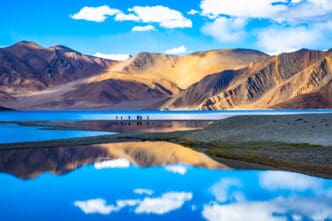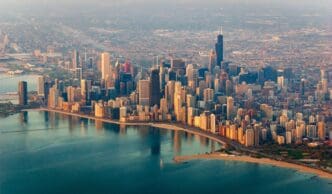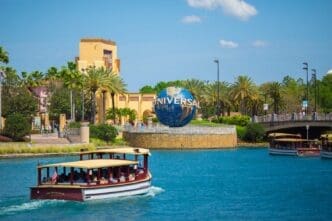Your Essential Overview
- Budget-friendly travel in Scandinavia is achievable through strategic planning, smart choices in accommodation and food, and embracing the region’s abundant free natural attractions.
- Key savings strategies include traveling during shoulder seasons, booking flights and accommodation (hostels, Airbnb, camping) in advance, utilizing public transport, and prioritizing self-catering with grocery store purchases.
- Scandinavia’s greatest treasures, such as its natural landscapes (fjords, forests, Northern Lights) and urban exploration (walking tours, parks), are often free or low-cost, offering authentic and immersive experiences.
The Destination’s Lore
- Scandinavia is widely perceived as an expensive travel destination due to its high cost of living, influenced by high wages, robust social welfare systems, and significant taxes that elevate prices for services, dining, and alcohol; however, this perception can be navigated as many core travel expenses can be managed with strategic planning, making a budget-friendly trip possible by focusing on smart choices for accommodation, food, and embracing the region’s abundant free natural wonders.
Making the Trip Yours
- The article challenges the common perception that Scandinavia is a prohibitively expensive travel destination, demonstrating that strategic planning, smart choices in accommodation and food, and an embrace of the region’s abundant free natural and urban attractions make a budget-friendly trip entirely feasible. This insight empowers travelers to explore the Nordic region without significant financial strain, encouraging a focus on authentic, cost-effective experiences like self-catering and outdoor activities over high-priced dining and services.
Perspectives from the Road
- The common perception of Scandinavia is that it is an expensive travel destination, a view supported by high wages, robust social welfare systems, and significant taxes contributing to a higher cost of living and inflated prices for services, dining out, and alcohol.
- However, savvy travelers can experience Scandinavia on a budget by employing strategic planning, making smart choices in accommodation and food, and embracing the region’s abundant free natural and urban attractions, proving that a high-quality trip doesn’t always mean a high price.
Scandinavia, a region renowned for its breathtaking landscapes, innovative design, and high quality of life, often carries a reputation for being an expensive travel destination. However, savvy travelers can absolutely uncover the magic of Denmark, Norway, and Sweden—and often Finland and Iceland, which are part of the broader Nordic region—without depleting their savings. With strategic planning, smart choices regarding accommodation and food, and an embrace of the region’s abundant free natural wonders, a budget-friendly Scandinavian adventure is not just possible, but entirely within reach for those seeking unique cultural and outdoor experiences.

Understanding the Scandinavian “Cost” Perception
The perception of Scandinavia as prohibitively expensive isn’t entirely unfounded. High wages, robust social welfare systems, and significant taxes contribute to a higher cost of living compared to many other parts of the world. This often translates to higher prices for services, dining out, and alcohol. However, it’s crucial to understand that many core travel expenses, such as flights and certain types of accommodation, can be managed effectively with foresight, allowing you to allocate your budget to experiences rather than inflated everyday costs.
The key to unlocking Scandinavia on a budget lies in differentiating between necessary expenses and discretionary spending. While a gourmet meal in Oslo or Copenhagen might be costly, a picnic by a fjord or a home-cooked meal in a rented apartment offers an equally authentic, and far more affordable, experience. By understanding where costs typically lie, you can proactively implement strategies to mitigate them and enjoy the region’s unparalleled beauty and culture.
Strategic Planning: Your First Step to Savings
Effective planning is the cornerstone of any budget-savvy trip to Scandinavia. The choices you make before you even depart can significantly impact your overall expenditure, from when you travel to how you book your flights and where you choose to lay your head each night.

When to Go: Timing is Everything
The timing of your visit plays a crucial role in pricing and experience. The shoulder seasons—late spring (April-May) and early autumn (September-October)—often present the best value. During these months, you’ll find fewer crowds, more moderate temperatures, and generally lower prices for flights and accommodation compared to the peak summer months.
Winter travel (November-March) offers unique allure, especially for chasing the Northern Lights in the Arctic regions of Norway, Sweden, and Finland. While flights and accommodation might be cheaper, specific gear for cold weather can add to costs, and daylight hours are significantly shorter. Summer (June-August) is the most popular time, boasting long daylight hours and pleasant weather, but it also comes with the highest prices and busiest attractions.
Flights: Booking Smart
Airfare is often one of the largest single expenses for long-haul travelers. To secure the best deals, book your flights well in advance, ideally 3-6 months out. Utilize flight comparison websites like Google Flights, Skyscanner, or Kayak, and be flexible with your travel dates and even your arrival airport. Flying into a major hub like Copenhagen (Denmark) or Stockholm (Sweden) and then taking a budget carrier or train to your final destination can sometimes be cheaper than direct flights to smaller cities.
Consider flying into a larger European city and then taking a budget airline or an overnight train/ferry into Scandinavia. Airlines like Norwegian Air, Ryanair, and Wizz Air often offer competitive fares for inter-European routes, opening up more affordable entry points to the region.
Accommodation: Sleep Smart, Save Big
Accommodation is another major budget factor, but Scandinavia offers diverse options for every wallet. Hostels are excellent for solo travelers or small groups, offering not just dorm beds but often private rooms at a fraction of hotel prices. Many modern Scandinavian hostels are incredibly clean, well-designed, and centrally located.
Renting an apartment or room through platforms like Airbnb or local equivalents can be highly cost-effective, especially for longer stays or groups. This option often includes kitchen facilities, allowing for significant savings on food by self-catering. In rural areas, look for traditional cabins (known as hytter in Norway and Sweden) or guesthouses, which offer charm and value. Camping is also a fantastic and affordable option during warmer months, with well-maintained campsites available across the region. In Sweden and Norway, the “Allemansrätten” (right to roam) allows for wild camping in many areas, offering a completely free and immersive nature experience, provided you follow local guidelines and respect the environment.
Smart Transportation Within Scandinavia
Navigating Scandinavia efficiently and affordably requires understanding the local transport networks and making strategic choices.
Public Transport: Efficient but Pricy
Scandinavia boasts excellent public transportation systems, including trains, buses, trams, and metros, which are punctual and reliable. However, individual tickets can add up quickly. For city exploration, consider purchasing a city pass (e.g., Copenhagen Card, Oslo Pass, Stockholm Pass), which often includes unlimited public transport and free or discounted entry to many attractions. These passes can offer substantial savings if you plan to visit several paid sights.
For inter-city travel, long-distance buses can often be significantly cheaper than trains, especially if booked in advance. Companies like FlixBus operate routes connecting major Scandinavian cities. Overnight ferries between certain cities, such as Copenhagen and Oslo, can also serve a dual purpose, saving on a night’s accommodation while transporting you to your next destination.
Car Rental: Freedom with a Cost
Renting a car offers unparalleled freedom, particularly for exploring the scenic fjords of Norway or the vast forests of Sweden. However, car rentals themselves can be expensive, and you must factor in high fuel costs, tolls (especially in Norway), and parking fees. This option is most cost-effective for groups who can split the expenses. For solo travelers or couples focused on city breaks, public transport is generally more economical.
Eating Well on a Budget
Food is another area where costs can quickly escalate in Scandinavia, but with a few smart tactics, you can enjoy delicious meals without overspending.
Self-Catering: Your Culinary Lifeline
The single most effective way to save on food is to utilize grocery stores and cook your own meals. If your accommodation has kitchen facilities, make the most of them. Stock up on breakfast items, sandwich ingredients for lunch, and ingredients for simple dinners. Major supermarket chains like Rema 1000, Kiwi (Norway), Netto, Lidl (Denmark), and ICA, Coop (Sweden) offer competitive prices.
Picnics are a fantastic and enjoyable option. Grab some local cheeses, bread, cold cuts, and fresh produce from a supermarket, and find a scenic spot to enjoy your meal. This allows you to savor local flavors while experiencing the beautiful surroundings.
Lunch Deals and Street Food
Many restaurants offer a “Dagens Rätt” (dish of the day) or lunch specials that are significantly cheaper than dinner menus. These often include a main course, bread, water, and sometimes coffee. Look out for these between noon and 2 PM. Street food markets are also growing in popularity across Scandinavia, offering diverse and often more affordable options than traditional restaurants.
A word of caution: alcohol is heavily taxed in Scandinavia and can be extremely expensive in bars and restaurants. If you wish to enjoy alcoholic beverages, purchase them from state-run liquor stores (e.g., Systembolaget in Sweden, Vinmonopolet in Norway) and consume them at your accommodation.
Free and Low-Cost Activities
Scandinavia’s greatest treasures are often its natural landscapes and accessible urban spaces, many of which can be enjoyed for free or at minimal cost.
Embrace Nature’s Bounty
Hiking, exploring national parks, visiting the iconic fjords, and enjoying the vast forests are largely free activities and represent the very essence of a Scandinavian adventure. Whether it’s a stroll along a Danish beach, a challenging hike to Preikestolen in Norway, or cycling through Swedish archipelagos, nature offers endless, cost-free entertainment. In winter, chasing the Northern Lights in the Arctic is a magical, albeit weather-dependent, free spectacle. During summer in the far north, the Midnight Sun provides endless daylight for exploration.
Urban Exploration and Culture
In cities, walking tours (some are free and tip-based) are an excellent way to get acquainted with the history and culture. Explore vibrant neighborhoods, relax in beautiful parks and gardens, and visit impressive churches and cathedrals, many of which offer free entry. Many museums also have specific free entry days or times, so check their websites in advance. Simply wandering the streets, window shopping, and soaking in the unique Scandinavian atmosphere costs nothing.
Money Matters and Miscellaneous Tips
A few final tips can help smooth your budget-savvy journey.
Be aware of the local currencies: Danish Krone (DKK), Norwegian Krone (NOK), Swedish Krona (SEK), Euro (EUR) in Finland, and Icelandic Króna (ISK) in Iceland. Credit cards are widely accepted, often preferred, and Scandinavia is largely a cashless society, so carrying minimal cash is usually sufficient. Tipping is not generally expected for good service, but rounding up the bill or leaving a small amount for exceptional service is always appreciated. Tap water is safe and delicious everywhere, so carry a reusable water bottle to stay hydrated and avoid buying bottled water. Lastly, free Wi-Fi is common in cafes, hotels, and public spaces, making it easy to stay connected without incurring roaming charges.
Traveling Scandinavia on a budget is not merely about cutting costs; it’s about making conscious choices that enhance your experience while respecting your financial limits. By prioritizing self-catering, embracing public transport, and immersing yourself in the region’s unparalleled natural beauty, you can embark on an unforgettable Nordic adventure that proves high quality doesn’t always mean high price. With careful planning and a spirit of adventure, the magic of Scandinavia awaits, accessible to all.








